TOYOTA HIGHLANDER 2012 XU40 / 2.G Manual PDF
Manufacturer: TOYOTA, Model Year: 2012, Model line: HIGHLANDER, Model: TOYOTA HIGHLANDER 2012 XU40 / 2.GPages: 636, PDF Size: 11.24 MB
Page 71 of 636
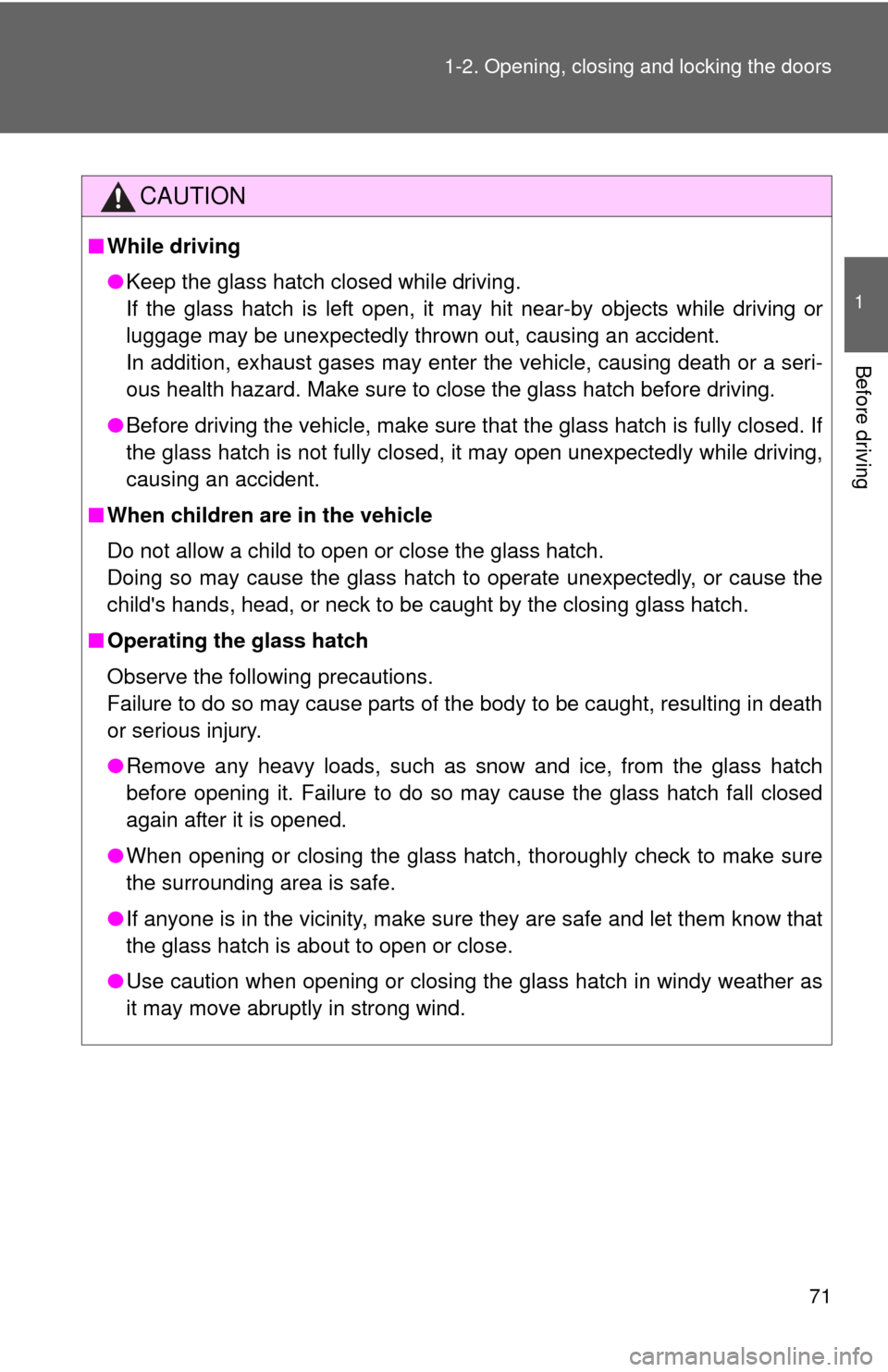
71
1-2. Opening, closing and locking the doors
1
Before driving
CAUTION
■
While driving
●Keep the glass hatch closed while driving.
If the glass hatch is left open, it may hit near-by objects while driving or
luggage may be unexpectedly thrown out, causing an accident.
In addition, exhaust gases may enter the vehicle, causing death or a seri-
ous health hazard. Make sure to close the glass hatch before driving.
● Before driving the vehicle, make sure that the glass hatch is fully closed. If
the glass hatch is not fully closed, it may open unexpectedly while driving,
causing an accident.
■ When children are in the vehicle
Do not allow a child to open or close the glass hatch.
Doing so may cause the glass hatch to operate unexpectedly, or cause the
child's hands, head, or neck to be caught by the closing glass hatch.
■ Operating the glass hatch
Observe the following precautions.
Failure to do so may cause parts of the body to be caught, resulting in death
or serious injury.
●Remove any heavy loads, such as snow and ice, from the glass hatch
before opening it. Failure to do so may cause the glass hatch fall closed
again after it is opened.
● When opening or closing the glass hatch, thoroughly check to make sure
the surrounding area is safe.
● If anyone is in the vicinity, make sure they are safe and let them know that
the glass hatch is about to open or close.
● Use caution when opening or closing the glass hatch in windy weather as
it may move abruptly in strong wind.
Page 72 of 636
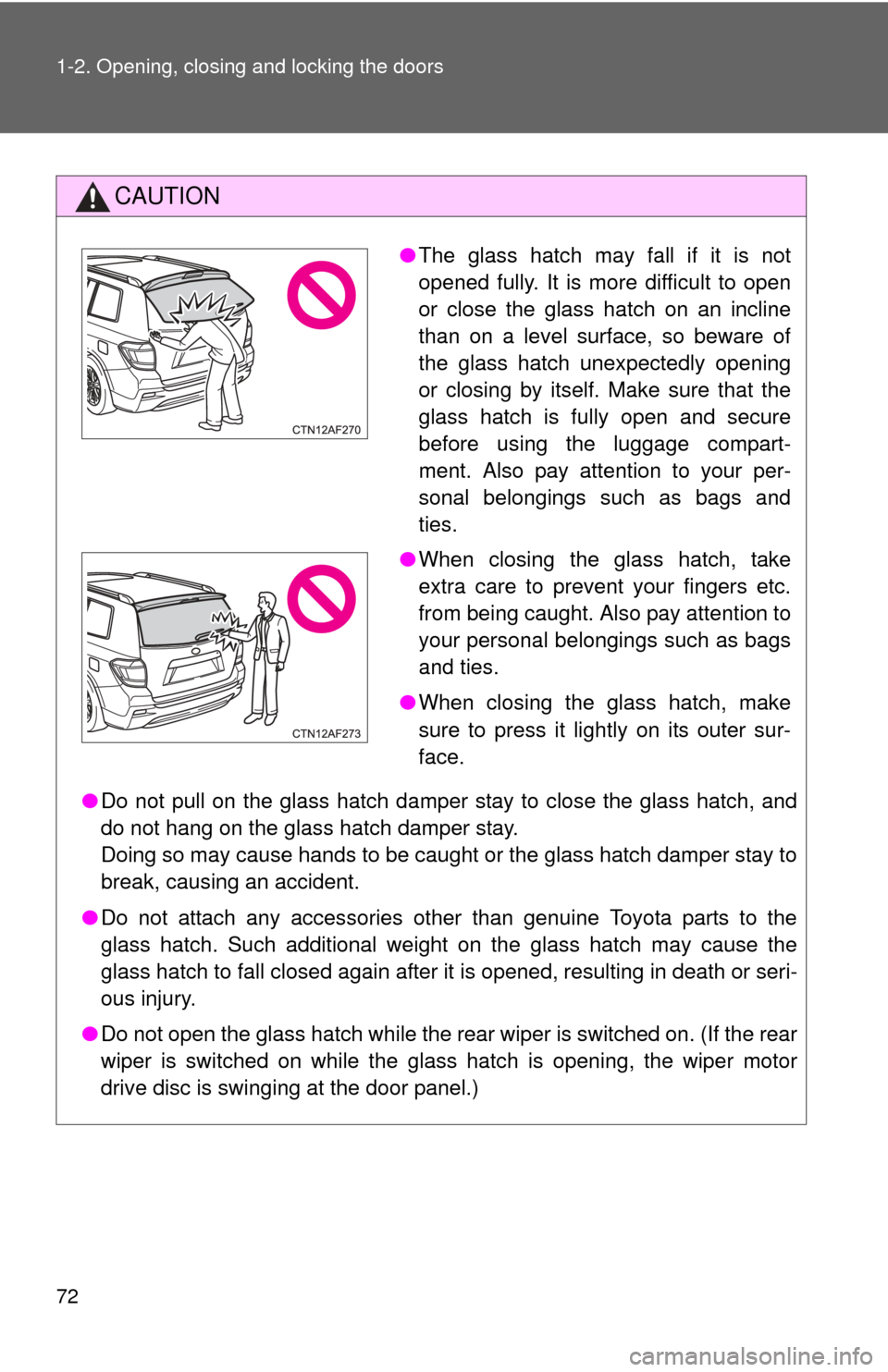
72 1-2. Opening, closing and locking the doors
CAUTION
●Do not pull on the glass hatch damper stay to close the glass hatch, and
do not hang on the glass hatch damper stay.
Doing so may cause hands to be caught or the glass hatch damper stay to
break, causing an accident.
● Do not attach any accessories other than genuine Toyota parts to the
glass hatch. Such additional weight on the glass hatch may cause the
glass hatch to fall closed again after it is opened, resulting in death or seri-
ous injury.
● Do not open the glass hatch while the rear wiper is switched on. (If the rear
wiper is switched on while the glass hatch is opening, the wiper motor
drive disc is swinging at the door panel.)
●The glass hatch may fall if it is not
opened fully. It is more difficult to open
or close the glass hatch on an incline
than on a level surface, so beware of
the glass hatch unexpectedly opening
or closing by itself. Make sure that the
glass hatch is fully open and secure
before using the luggage compart-
ment. Also pay attention to your per-
sonal belongings such as bags and
ties.
● When closing the glass hatch, take
extra care to prevent your fingers etc.
from being caught. Also pay attention to
your personal belongings such as bags
and ties.
● When closing the glass hatch, make
sure to press it lightly on its outer sur-
face.
Page 73 of 636
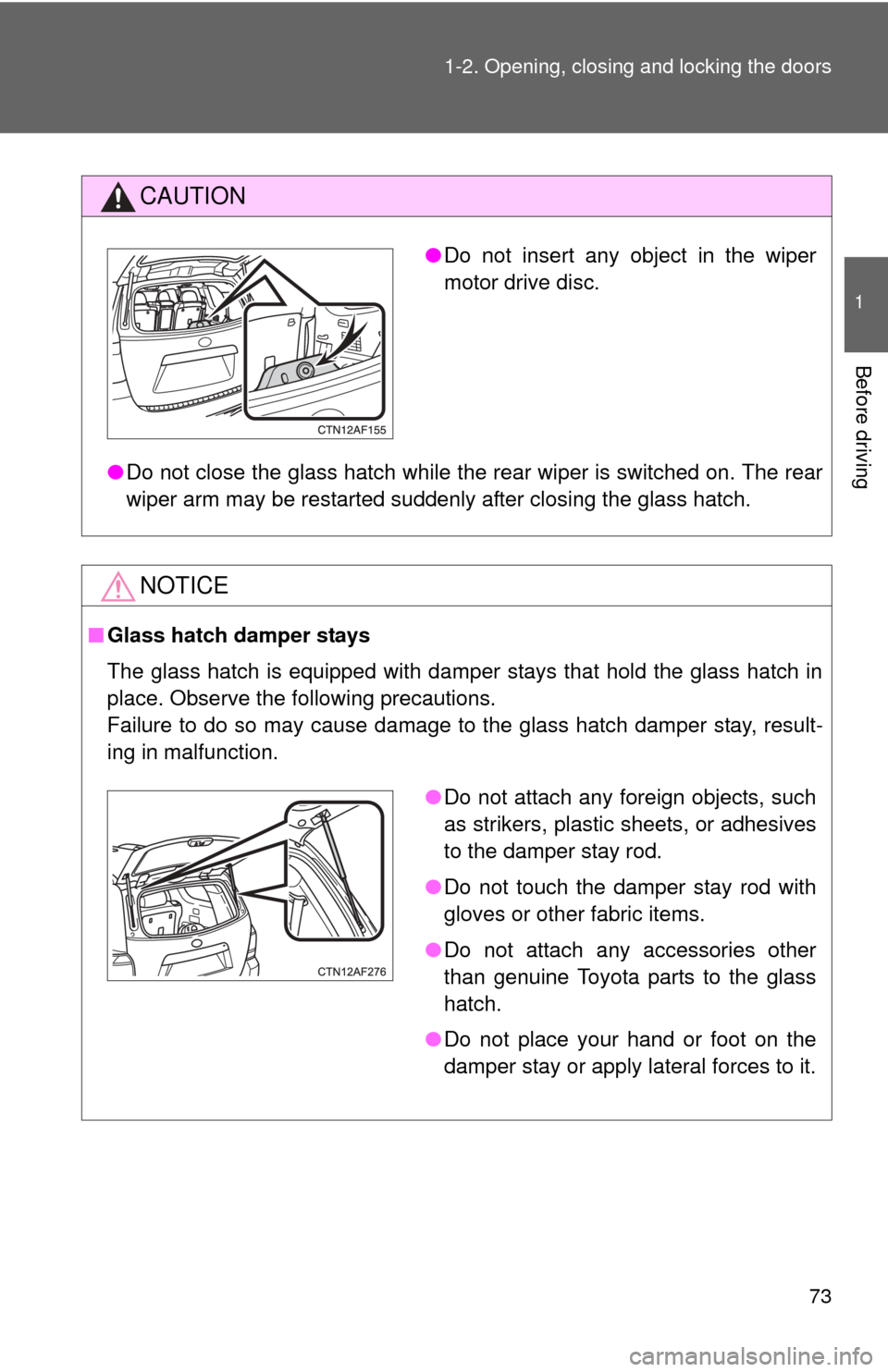
73
1-2. Opening, closing and locking the doors
1
Before driving
CAUTION
●
Do not close the glass hatch while the rear wiper is switched on. The rear
wiper arm may be restarted suddenly after closing the glass hatch.
NOTICE
■Glass hatch damper stays
The glass hatch is equipped with damper stays that hold the glass hatch in
place. Observe the following precautions.
Failure to do so may cause damage to the glass hatch damper stay, result-
ing in malfunction.
●Do not insert any object in the wiper
motor drive disc.
●Do not attach any foreign objects, such
as strikers, plastic sheets, or adhesives
to the damper stay rod.
● Do not touch the damper stay rod with
gloves or other fabric items.
● Do not attach any accessories other
than genuine Toyota parts to the glass
hatch.
● Do not place your hand or foot on the
damper stay or apply lateral forces to it.
Page 74 of 636
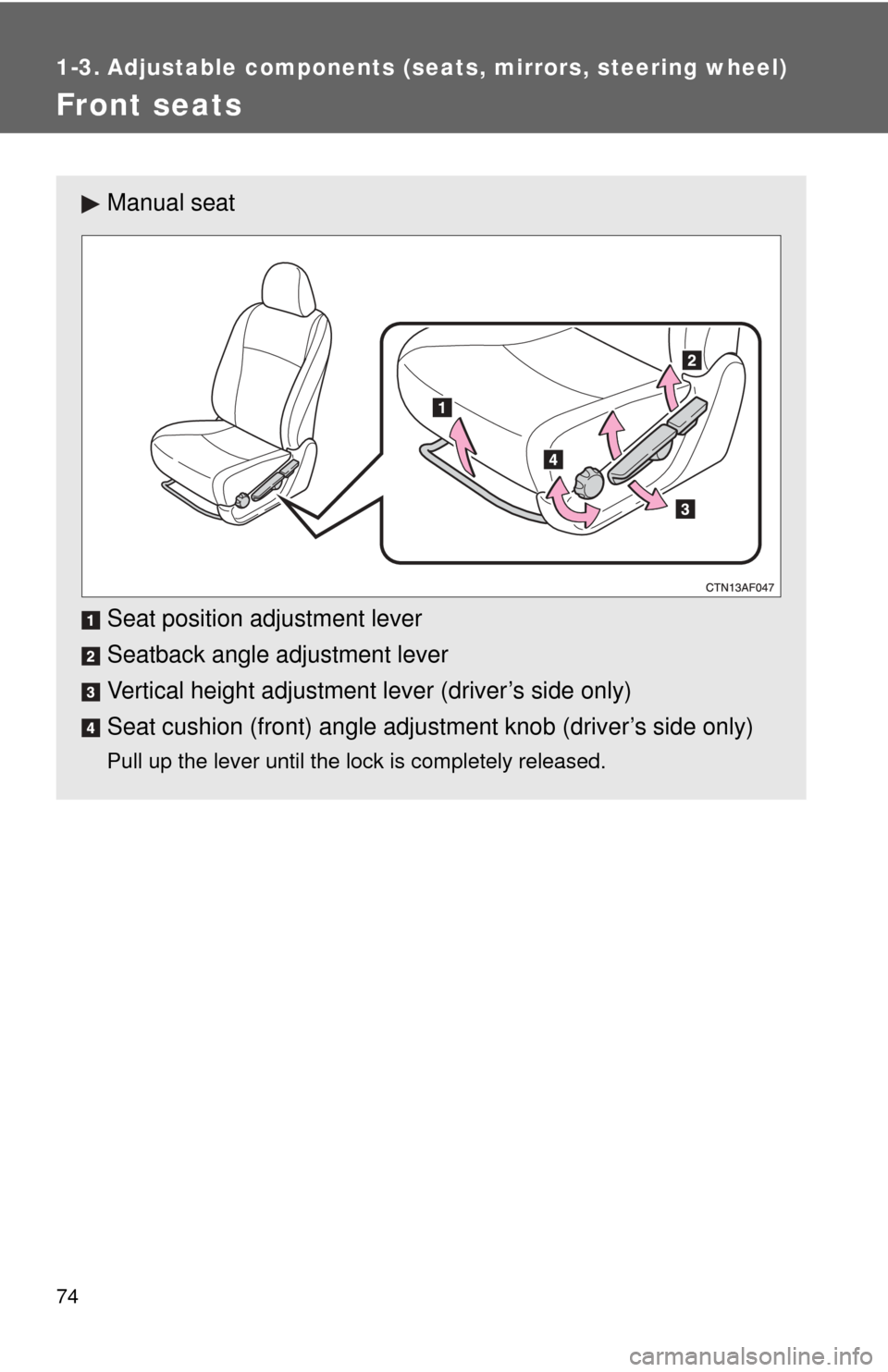
74
1-3. Adjustable components (seats, mirrors, steering wheel)
Front seats
Manual seat
Seat position adjustment lever
Seatback angle adjustment lever
Vertical height adjustment lever (driver’s side only)
Seat cushion (front) angle adjustment knob (driver’s side only)
Pull up the lever until the lock is completely released.
Page 75 of 636
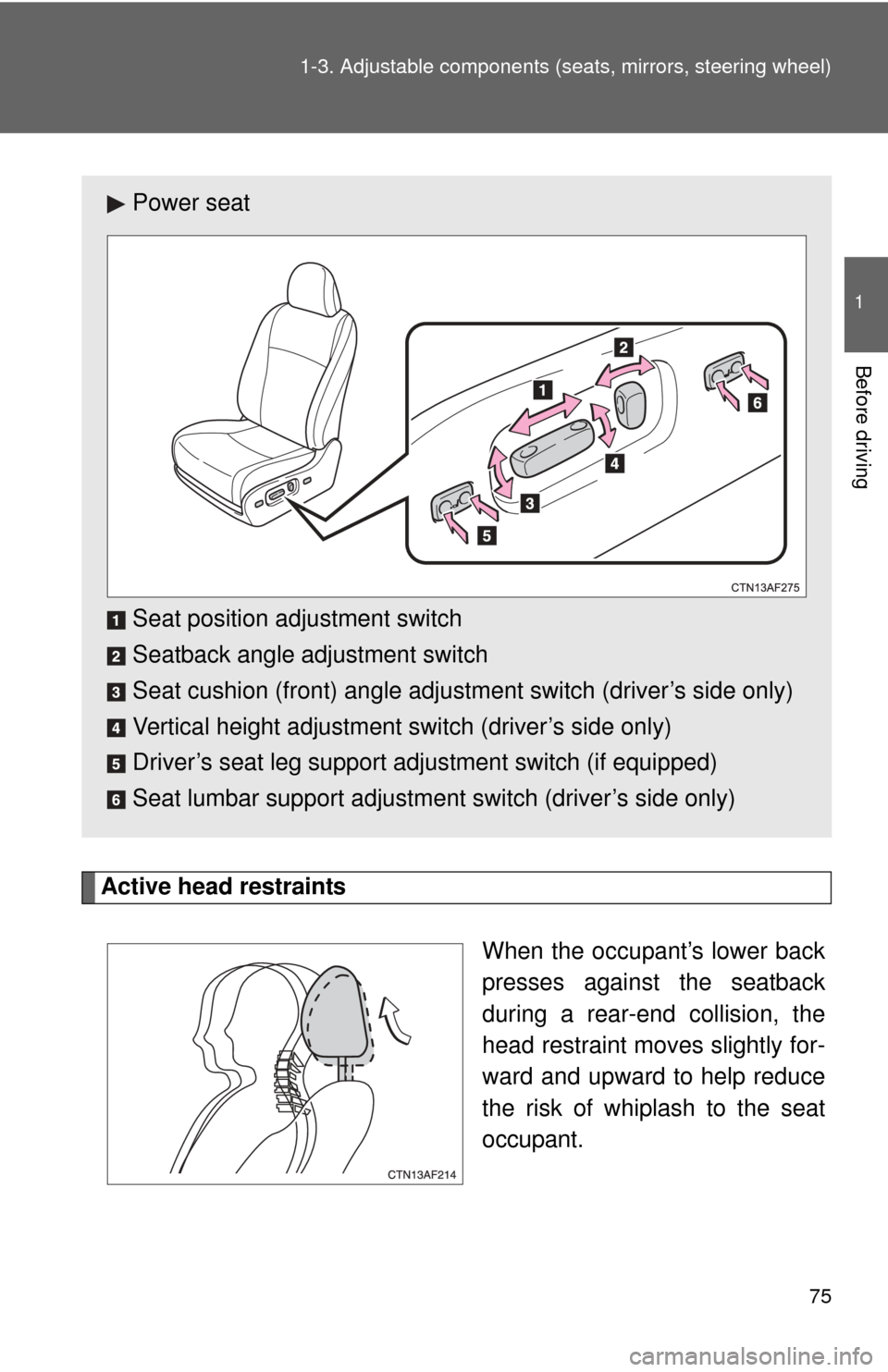
75
1-3. Adjustable components (s
eats, mirrors, steering wheel)
1
Before driving
Active head restraints
When the occupant’s lower back
presses against the seatback
during a rear-end collision, the
head restraint moves slightly for-
ward and upward to help reduce
the risk of whiplash to the seat
occupant.
Power seat
Seat position adjustment switch
Seatback angle adjustment switch
Seat cushion (front) angle adjustment switch (driver’s side only)
Vertical height adjustment switch (driver’s side only)
Driver’s seat leg support adjustment switch (if equipped)
Seat lumbar support adjustment switch (driver’s side only)
Page 76 of 636
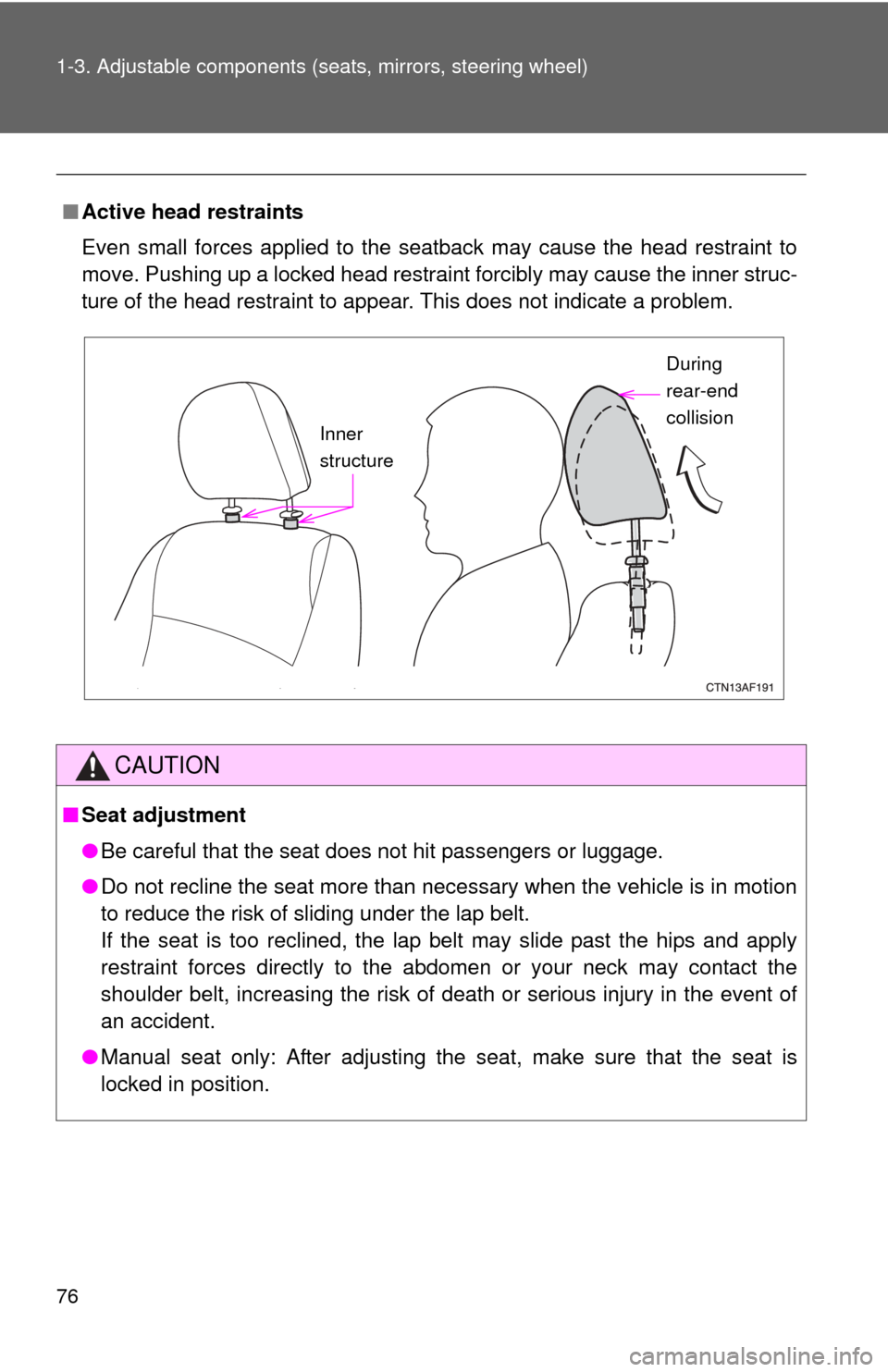
76 1-3. Adjustable components (seats, mirrors, steering wheel)
■Active head restraints
Even small forces applied to the seatback may cause the head restraint to
move. Pushing up a locked head restraint forcibly may cause the inner struc-
ture of the head restraint to appear. This does not indicate a problem.
CAUTION
■Seat adjustment
●Be careful that the seat does not hit passengers or luggage.
● Do not recline the seat more than necessary when the vehicle is in motion
to reduce the risk of sliding under the lap belt.
If the seat is too reclined, the lap belt may slide past the hips and apply
restraint forces directly to the abdomen or your neck may contact the
shoulder belt, increasing the risk of death or serious injury in the event of
an accident.
● Manual seat only: After adjusting the seat, make sure that the seat is
locked in position.
Inner
structure During
rear-end
collision
Page 77 of 636
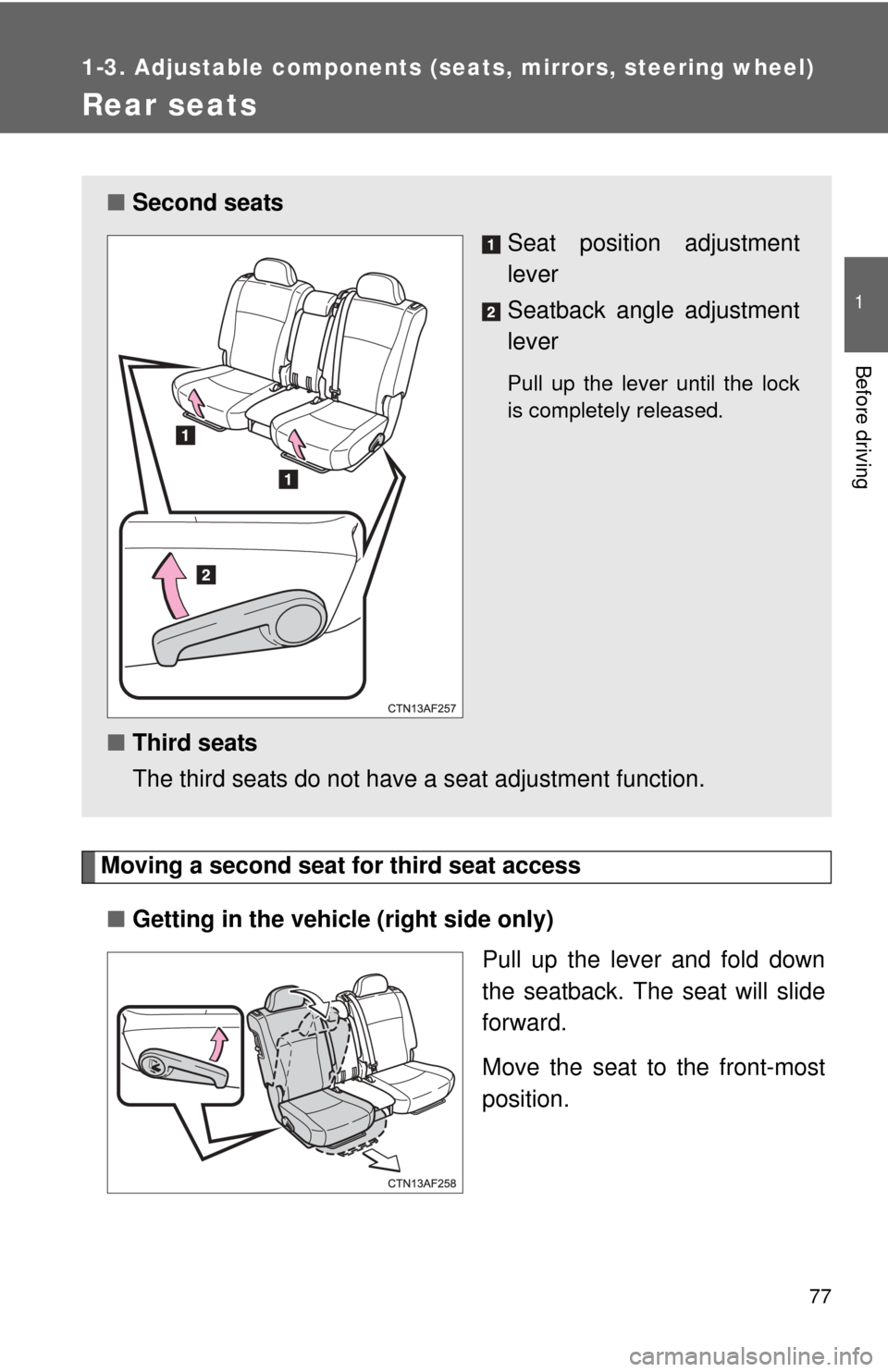
77
1
1-3. Adjustable components (seats, mirrors, steering wheel)
Before driving
Rear seats
Moving a second seat for third seat access■ Getting in the vehicl e (right side only)
Pull up the lever and fold down
the seatback. The seat will slide
forward.
Move the seat to the front-most
position.
■Second seats
Seat position adjustment
lever
Seatback angle adjustment
lever
Pull up the lever until the lock
is completely released.
■Third seats
The third seats do not have a seat adjustment function.
Page 78 of 636

78 1-3. Adjustable components (seats, mirrors, steering wheel)
■Getting out of the vehicle (right side only)
Lift the lever on the side of the
seatback and fold down the seat-
back. The seat will slide forward.
Move the seat to the front-most
position.
■ After passengers have entered/exited the vehicle
Lift up the seatback and slide the seat backward until it locks.
Folding down the second seats
■ Before folding down the second seats
Stow the rear center seat belt
buckle.
Pass the outer seat belts through
the seat belt hangers and secure
the seat belt plates.
This prevents the shoulder belt
from being damaged.
Make sure that the seat belts are
removed from the hangers before
using them.
STEP1
STEP2
Page 79 of 636
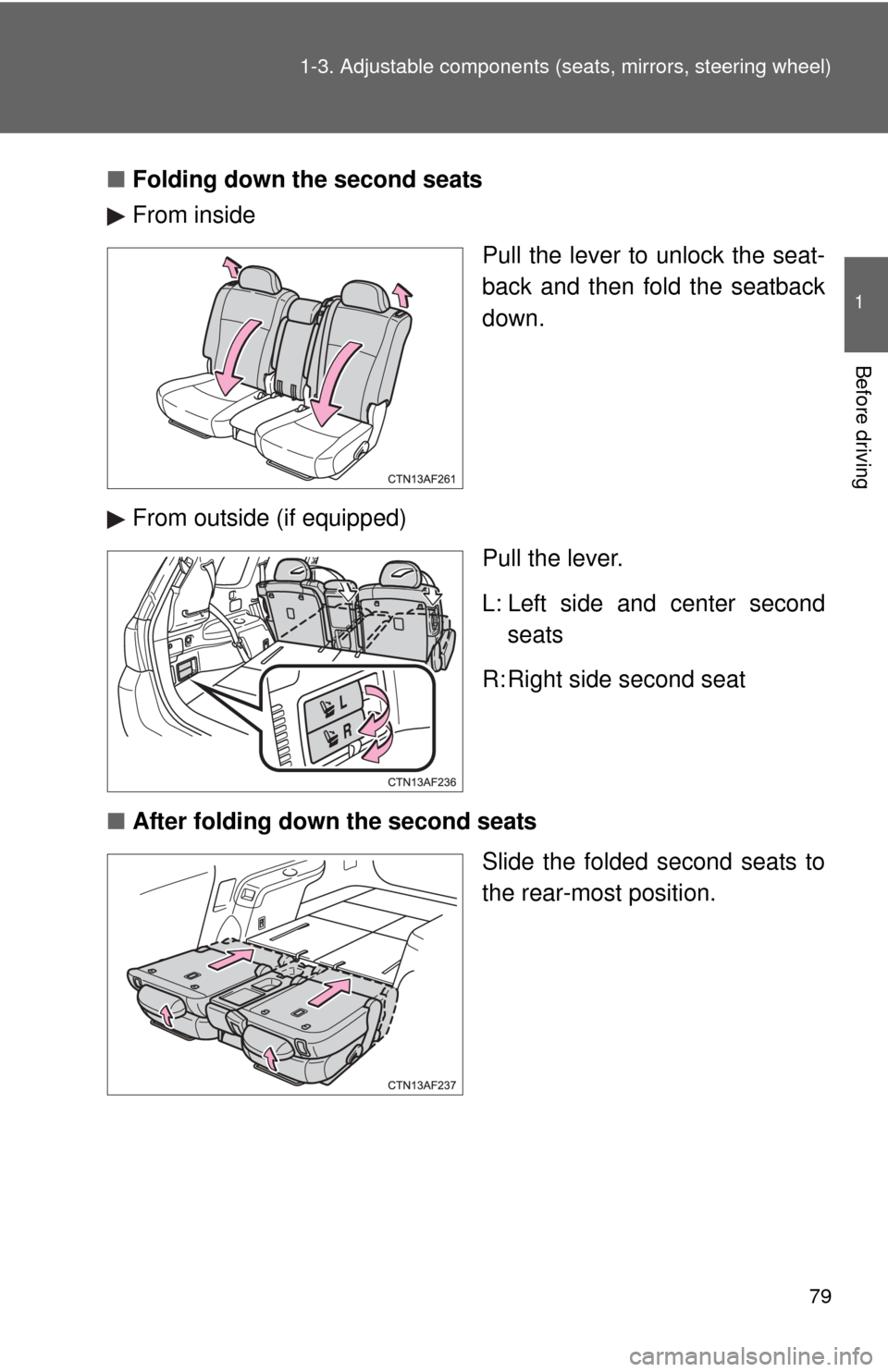
79
1-3. Adjustable components (s
eats, mirrors, steering wheel)
1
Before driving
■Folding down the second seats
From inside
Pull the lever to unlock the seat-
back and then fold the seatback
down.
From outside (if equipped) Pull the lever.
L: Left side and center secondseats
R: Right side second seat
■ After folding down the second seats
Slide the folded second seats to
the rear-most position.
Page 80 of 636

80 1-3. Adjustable components (seats, mirrors, steering wheel)
Folding down the third seats
■ Before folding down the third seats
Stow the third seat belt buckles.
Pass the seat belts through the
seat belt hangers.
This helps to prevent the shoulder
belts from being damaged.
Make sure that the seat belts are
removed from the hangers before
using them.
■Folding down the third seats
While pulling the straps, fold
down the seatbacks.
The head restraints will fold down
automatically when the straps are
pulled.
STEP1
STEP2